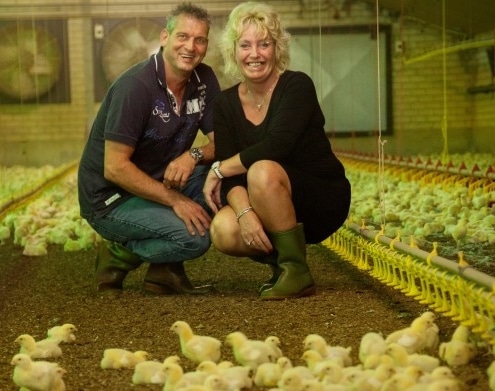More than 70.000 broilers are placed in the broiler houses of Bennie and Nancy van der Doelen in Vinkel the Netherlands. The family business, operated by his parents and brother Antoon, was taken over by Bennie in 1985. After the takeover, he and his wife Nancy expanded the business with two new stables. The farm grew from 40.000 to 70.000 broilers.
“In the past we used antibiotics when digestive problems occurred”, Bennie van der Doelen explains. “When this was no longer allowed we started looking for alternatives in close cooperation with our veterinarian.” This is when the poultry farmer came in contact with Daavision and Digestiefit.
“Together with our veterinary practice we drew up a detailed plan of approach in order to address the digestive problems at our farm. Besides e.g. hygiene measurements the Digestiefit is also part of the plan”, says Van der Doelen. Digestion problems can negatively affect broilers. The thinner manure that is excreted by the animals leads to wetter litter. This increases the risk of damages to the foot pad, i.e. a higher risk for foot pad lesions. Lesions not only cause pain during walking but broilers will also eat less and remain behind in growth compared to their peers.
“Our broilers are checked for foot pad lesions at the slaughterhouse. When too many lesions are determined, then we might have to decrease our density level per m2”, Van der Doelen continues. “To counter this it is very important that we keep the stables dry during the first 4 weeks. That is why we dose Digestiefit during every feed conversion. During three days we dose 1,5 liters Digestiefit per 1000 liters of drinking water. On average, we will dose 3 times per production round, resulting in 1 drum of 225kg per round.”
As soon as Nancy and Bennie notice that the digestion of their broilers declines they start administering Digestiefit. “Now we are also able to address the problem when it is not related to the feed conversion”, the poultry farmer adds. “Digestiefit improves the digestion of our animals, resulting in drier stables and less damage caused by foot pad lesions.”



